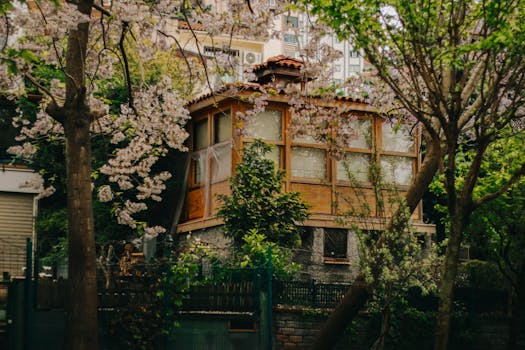
Urban Green Spaces: The Future of Outdoor Living in European Cities by 2025
Urban Green Spaces are becoming increasingly important in European cities, and by 2025, they will be a crucial component of outdoor living. As the world becomes more urbanized, cities are looking for ways to incorporate green spaces into their infrastructure to promote sustainability, improve air quality, and enhance the quality of life for their citizens.
Introduction to Urban Green Spaces
Urban Green Spaces refer to areas in cities that are dedicated to parks, gardens, and other green areas. These spaces provide a range of benefits, including reducing air pollution, mitigating the urban heat island effect, and providing habitats for wildlife. They also offer opportunities for recreation, socialization, and relaxation, making them an essential component of urban planning.
The Benefits of Urban Green Spaces
Urban Green Spaces have numerous benefits, including:
- Improved air quality: Green spaces can absorb pollutants and particulate matter, improving the air quality in cities.
- Reduced urban heat island effect: Green spaces can provide shade and cool the air through evapotranspiration, reducing the urban heat island effect.
- Increased biodiversity: Green spaces can provide habitats for wildlife, increasing biodiversity in cities.
- Improved mental health: Green spaces can provide opportunities for recreation, socialization, and relaxation, improving mental health and well-being.
- Increased property values: Green spaces can increase property values, making them an attractive feature for homebuyers and businesses.
Examples of Urban Green Spaces in European Cities
Many European cities are incorporating urban green spaces into their infrastructure, including:
- Paris, France: The city is creating a network of green spaces, including parks, gardens, and green roofs, to reduce air pollution and improve quality of life.
- London, UK: The city is investing in green infrastructure, including parks, gardens, and green spaces along the Thames River, to improve air quality and mitigate the urban heat island effect.
- Amsterdam, Netherlands: The city is creating a green network, including parks, gardens, and green roofs, to promote sustainability and improve quality of life.
Challenges and Opportunities for Urban Green Spaces
While urban green spaces offer many benefits, there are also challenges and opportunities to consider, including:
- Funding: Creating and maintaining urban green spaces can be costly, requiring significant investment from cities and private donors.
- Space: Finding space for urban green spaces can be challenging, particularly in densely populated cities.
- Community engagement: Encouraging community engagement and participation in urban green spaces is crucial for their success and sustainability.
- Technology: Leveraging technology, such as green roofs and walls, can help to create urban green spaces in areas where traditional green spaces are not possible.
Conclusion
Urban Green Spaces are a crucial component of outdoor living in European cities, and by 2025, they will be an essential feature of urban planning. As cities continue to urbanize, it is essential to prioritize the creation and maintenance of urban green spaces to promote sustainability, improve air quality, and enhance the quality of life for citizens.






